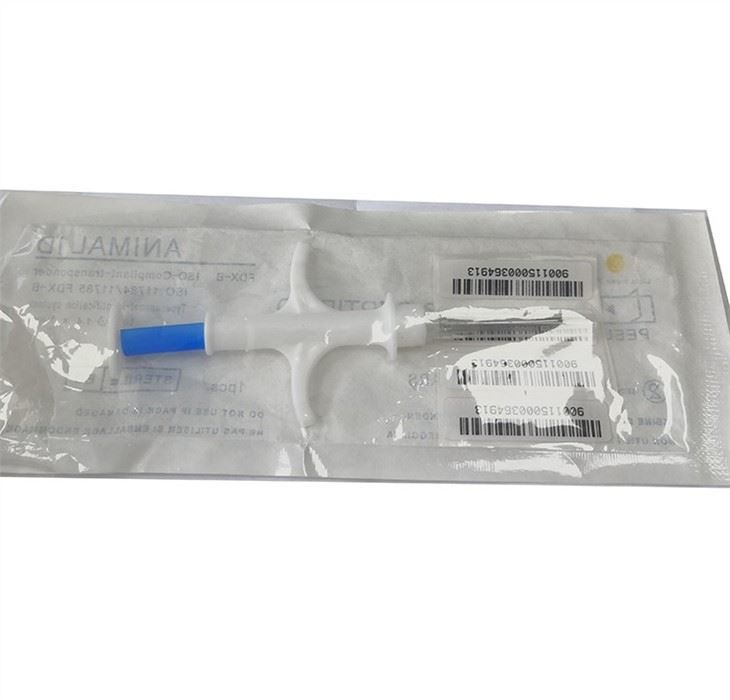Products Description
RFID animal glass tubes are usually made of glass or biocompatible materials, have a tiny size and a soft shell, so that they can be safely implanted in animals. The device contains an integrated circuit chip and a small antenna. The RFID chip stores a unique identification code that can be read when communicating with an RFID reader.
The process of implanting RFID animal glass tubes is usually done by a trained veterinarian or technician. Using a syringe, they implant glass RFID tubes into the animals, usually under the skin of the animals’ necks or backs. Once implanted, the presence of the RFID animal glass tube is almost imperceptible to the animal and causes no discomfort or pain.
RFID technology can communicate via radio waves, allowing readers to communicate wirelessly with implanted RFID animal glass tubes. When the reader approaches the location of the animal’s body, it emits a radio signal and receives a response signal emitted by the RFID chip. In this way, the reader can recognize and read the unique identification code stored in the RFID chip.
Products Advantage
One of the main advantages of RFID animal glass tubing is its durability. Once implanted in an animal, the RFID glass tube can exist for a long time and provide continuous identification and tracking functions. This makes it widely used in animal management, animal husbandry and scientific research, such as animal identification, vaccination records, behavioral research and population monitoring.
Another important advantage is the contactless nature of RFID technology. Compared with traditional identification methods, such as ear tags or ties, RFID animal glass tubes do not require physical contact to read information. This makes the identification process more convenient, fast and accurate, with less intervention and stress on the animal.
How to use?
RFID (Radio Frequency Identification) animal syringe is a device that uses radio frequency identification technology to inject drugs or perform other related operations for animals. The following are the general steps to use RFID animal syringes:
Preparation:
Make sure you have an animal with an RFID chip. This is usually a small microchip that is implanted under the animal’s skin.
Make sure you have an RFID animal syringe. This is usually a handheld device that has a needle or syringe port for injecting the drug into the animal and can read information from an RFID chip.
Check the syringe:
Make sure the syringe is charged (if it is a rechargeable device) or has new batteries installed (if it is a battery-operated device).
Check the display or light on the syringe to make sure it is working.
Identify animals:
Place the RFID animal syringe close to the chip site on the animal’s body.
Activate the RFID reading function. This can be done by pressing a button on the device or touching the screen.
When the injector successfully reads the animal’s RFID chip, it will display relevant animal information, such as the animal’s name, number, etc.
To inject:
Determine the required injection dose and type of drug.
Insert the needle or syringe port under the animal’s skin.
Press or touch the injection button on the syringe to inject the drug into the animal. Make sure to follow the correct dosage and injection method.
Note that different RFID animal syringes may have some differences, so it is best to read the relevant user manual or follow the instructions provided by the manufacturer before use. Also, use caution when using RFID animal syringes and make sure you have adequate training and experience to ensure the safety and well-being of your animals. If necessary, you can seek veterinary or professional help.
To sum up, RFID animal syringes have the advantages of high efficiency and speed, data management, accurate records, improved safety and batch management. They provide more convenient, accurate and efficient solutions for animal management and veterinary care.
Related Products





